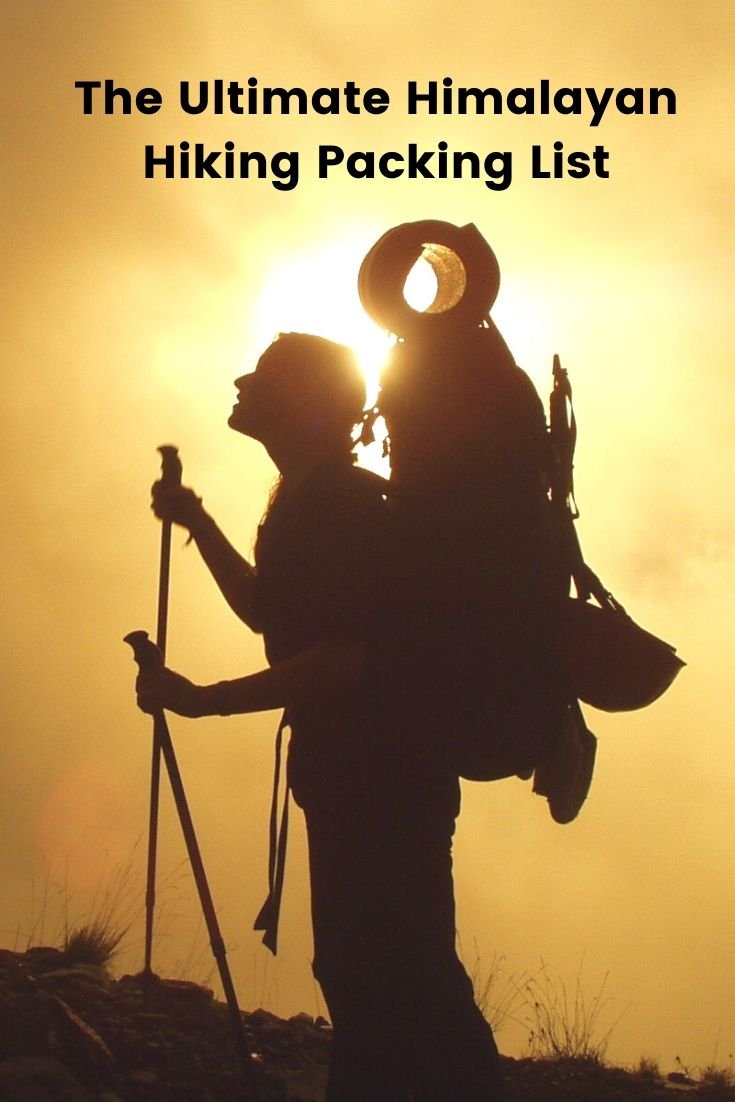We are often asked about what to carry for 7-10 days of Himalayan treks? Right packing is very essential for any trek. When the packing is done well, it becomes easier to carry the backpack. For this, we carry only the essentials that are required for the trek. Here is our hiking packing list for up to 10 days of a Himalayan trek. Out of these, the most important ones are Trekking Shoes, Backpack, Trekking poles, Spare clothes, Rain jacket/Poncho, Sunglasses, Water Bottle, Personal Medi-Kit and a camera to take back the beautiful memories. We usually try to avoid taking unnecessary clothing & toiletries that are heavy and of little use on the mountain. The mantra is “Pack light and enjoy the trek.”

Trekking Shoes : It is advisable to have a pair of trekking shoes as they prevent ankle twist and have better grip in the mountain trails. The shoe must have ankle support and a good grip. It is better to have one size bigger than the normal that is worn; it provides comfort while trekking downhill. We personally use Quechua Forclaz 600 Waterproof Hiking Shoes.

Basic Gear for Himalayan Treks
Backpack & Rain cover : A good Backpack is a must. It should be light and comfortable to carry. A 50-60 litre backpack is enough for any Himalayan trek unless you are going for expeditions. Rain cover is important for protect the Backpack and the items inside it from rain/dust/stain etc. We use Quechua Forclaz 60 litre Backpack.
Day pack/ Knapsack : It is generally needed for the summit day. Also if you offload your Backpack, it is needed for carrying water bottle, food, camera, poncho etc.
Trekking poles : These are the most important during treks as they help to reduce the pressure on knees and give balance specially while descending.
LED Torch/ Head Lamp : the campsite becomes quite dark after dusk. So we carry a head lamp and LED torch with us. Headlamps are quite useful as it keeps our hands free. Also on the summit days when we have to start early, headlamps are quite useful in the dark. And yes, don’t forget to take extra cells!

Clothing for Himalayan Treks
Warm Jacket : We carry one wind & waterproof thick jacket with hood. This saves us from cold and drizzle.
Trek pants : 2 pairs of quick dry kind pants are good for trek. Dry fit Track pants can also be taken, but jeans should be strictly avoided.
T-shirts : 3-4 T-shirts and at least one Dry fit/Quick dry type which can ventilate sweat/moisture wicking are needed. It is better to avoid cotton T-shirts while waking.
Fleece Jacket : During hiking in the daytime, fleece jackets is not required unless it is very cold as in Chadar Trek. They are best to be used at the campsites to stay away from the cold.
Inner Thermals : Generally needed at night at the campsites. Upper and lower (Woolly cot) are preferable for winter treks.
Gloves : Waterproof warm gloves are also important as they help in protection from cold and prevent numbness in hands.
Under garments : It is advisable to take equal no of under garments as the no of days of the trek to maintain hygiene during trekking.

Miscellaneous
Sunglasses : Although we do not give much importance to it, but sunglasses are very important for Himalayan treks. They protect the eyes from sun-rays and snow-blindness. We use a good quality UV protective sunglasses for our treks. One important tip: Avoid blue shades.
Camera & camera Accessories: A good photograph can tell a good story. So to capture the beauty of the mountains and nature, we carry our NIKON D7200 camera.
Tip: The batteries get discharged very soon in the cold. Carry extra batteries. And when not in use, keep the batteries inside a sock or the inner pocket of your jacket.

Personal Utilities
Sunscreen cream, Lip balm, Hand sanitizer, Wet wipes, Toilet Paper, Toothbrush & toothpaste or Mouth freshener and Quick-dry towel.
Personal Medi-kit
Antibacterial powder, ORS/Electrolyte, Band Aid, Volini Spray, Antacid, Paracetamol etc.
For other personal medicines consult your doctor/physician.

Always carry an ID proof and list of important phone numbers with you while trekking.

Explore all our Himalayan Treks
Chadar Trek in Ladakh – experience, tips, guide & FAQs answered.
Roopkund Trek Guide – All that you wanted to know.
Rupin Pass – an epiphanous journey.
Tungnath Chandrashila Deoriatal Trek itinerary and details (FAQs answered).
Sandakphu Trek with Phalut – a complete guide.
Amarnath Yatra Trek Route – a complete Guide : Updated in 2019.






































Noted! That is if I am ever lucky enough to do this treck!
flip-flops? why? wouldn’t it be too cold? I also think crampons are a must which I didn’t see on your list. and I agree with trekking poles! It will definitely save the day!
Flip flops are quite useful to move around the campsites. So recommended. And crampons are not needed for all the treks. They are only needed for the expeditions and the ones having too much snow!
This is something I would love to do one day !! I’d imagine you’d have to be extremely fit though. Great post, very informative